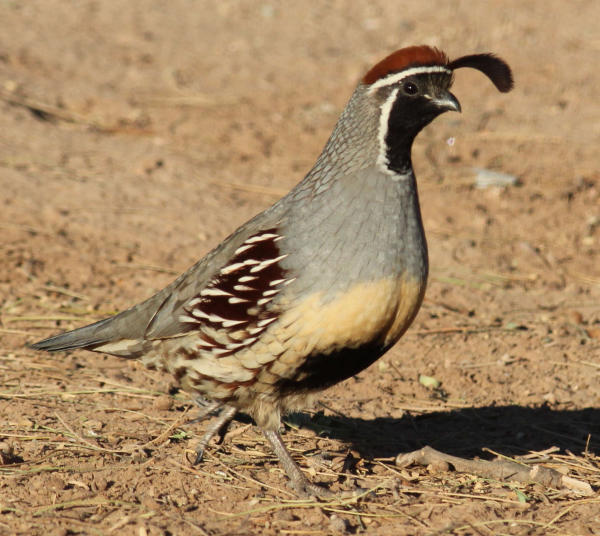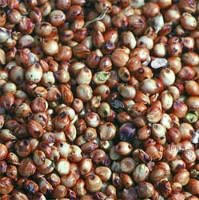
Gambel’s Quail are among the few birds that feed on milo seeds; photo by Paul Konrad

Milo seeds; photo courtesy of the Wild Bird Feeding Industry (www.wbfi.org)
|
Too often we look for economy before quality when we are shopping, but when it comes to bird seed mixes, milo seeds are used as an inexpensive filler to help keep seed mix prices lower. The real problem though, is that the majority of birds just don’t eat milo.
Milo, also known as red milo or sorghum, is a row crop that resembles corn superficially and is commonly used to feed livestock and to produce ethanol. The Cornell Laboratory of Ornithology explains that with the exception of a few birds such as Gambel’s Quail, Steller’s Jays and Curve-billed Thrashers, most birds avoid milo seeds.
Milo seeds may keep seed mix prices low, but in the long run these “inexpensive” bird seed mixes will cost you more because you are paying for something that most birds won’t eat. Because most birds don’t eat the small round milo seeds, the discarded seeds will accumulate in your feeder, and under it, and will probably get moldy, which is a potential health hazard for birds, and it may attract rodent pests.
Christopher Ingraham explored the issue of bird seed mix ingredients in a Washington Post article earlier this year. It’s an interesting and educational read that will help you improve your backyard feeding station.
You can read the story at https://www.washingtonpost.com/business/2018/07/31/why-many-bird-seed-mixes-are-filled-with-stuff-birds-wont-eat/?utm_term=.126050f31e68
Article by Peter Stangel